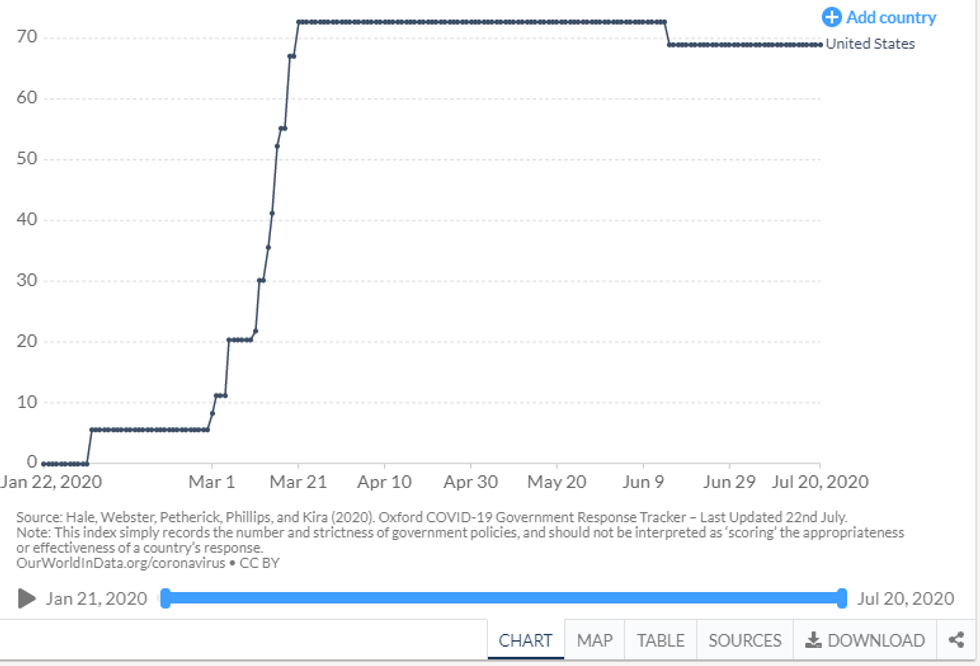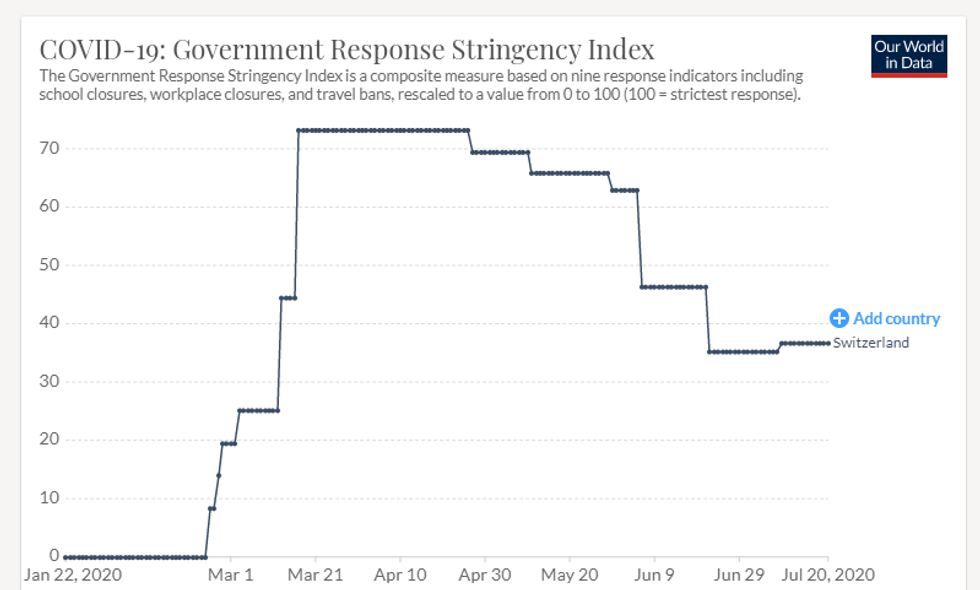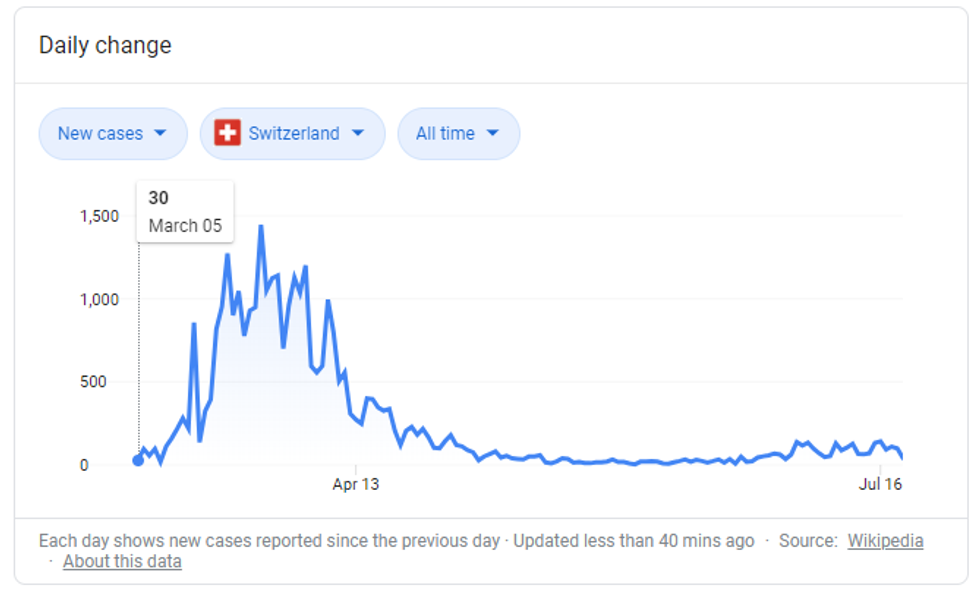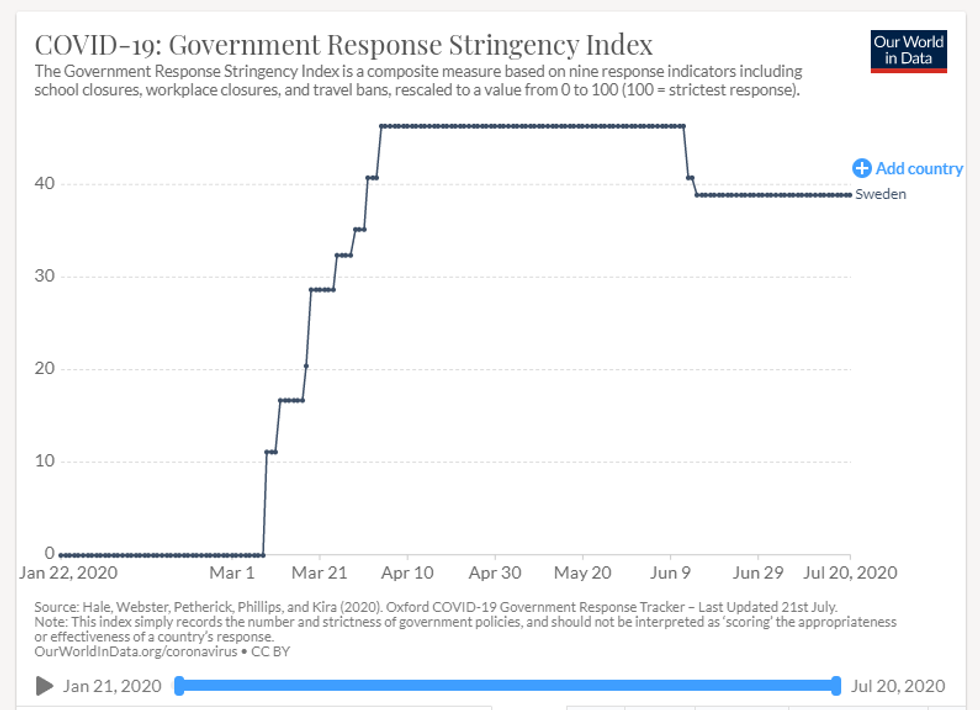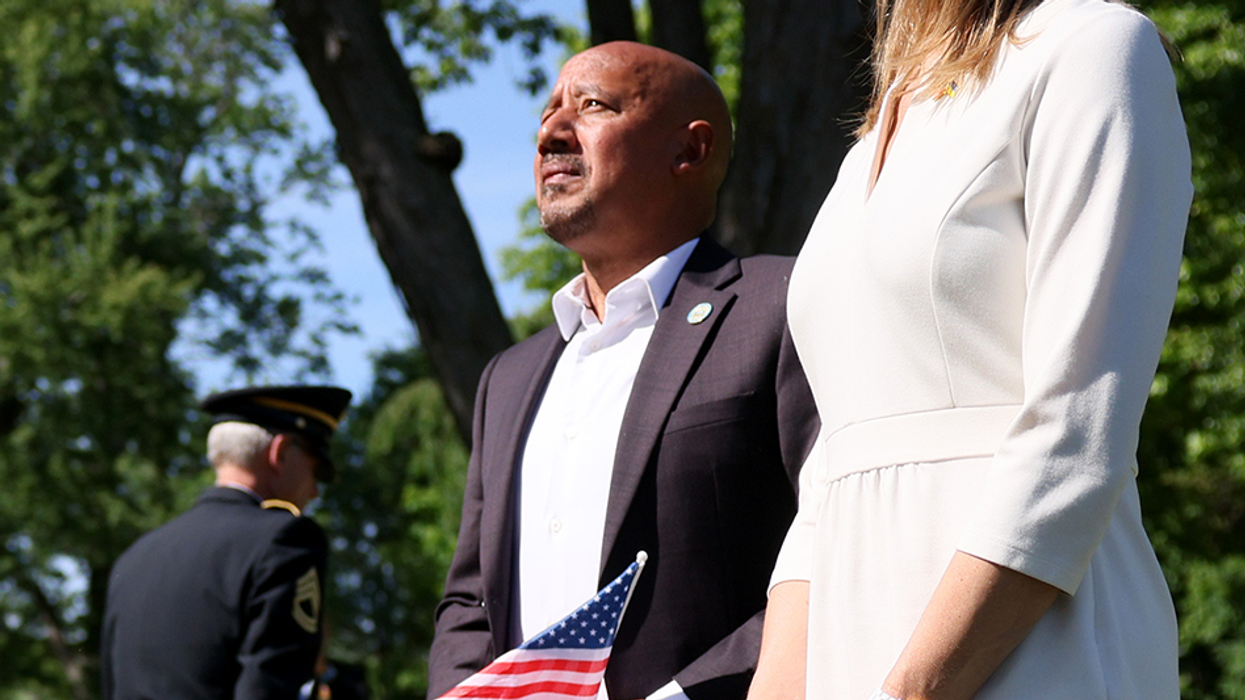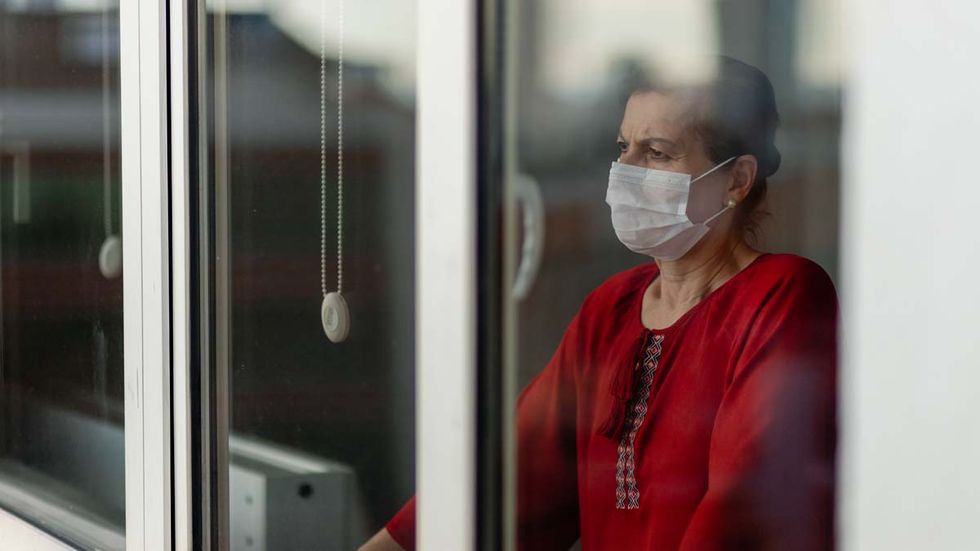
© 2025 Blaze Media LLC. All rights reserved.
Horowitz: Comparing Europe to the US, the evidence is clear: Lockdowns don't work
July 22, 2020
Here’s the good news for opponents of lockdowns and mask mandates: They don’t work. However, that is also the bad news. Because they don’t work, politicians who have seized power by executive fiat for months on end can continue promulgating even more life-altering rules, precisely because the original ones never worked!
Americans are now facing this predicament: The more the effectiveness of these executive policies is disproven, the more the politicians use that lack of results as a pretext for even more rules. Thus, if stay-at-home orders failed to work as promised, they demand mask-wearing. If mask-wearing was in place for months and still didn’t work, which has been the case in most hot spots, then they mandate mask-wearing in personal homes in Broward County, Florida, and for two-year-olds in Baltimore County, Maryland. Because you know, the only possible explanation for continued spread of a virus that is not deadly for most people is that two-year-olds weren’t wearing masks. Never mind studies from nearly every major European country showing kids, particularly young kids, do not contribute to community spread, even if masks did work.
Speaking of European countries, it’s time to dispel one of the more popular myths propagated by our new dictators. We are constantly being lectured to by the “experts” that America didn’t have enough of a lockdown and that is the reason why we are still seeing a spread of the virus while Europe seems to be done with it. A new eye-opening analysis from the American Institute for Economic Research (AIER) shows that America had just as severe a lockdown as most European countries and in fact had a longer-lasting lockdown than every country except for England.
The accusation that America didn’t lock down enough is based on three premises – that we locked down later than Europe, didn’t lock down as hard, and reopened earlier. As Phillip Magness of AIER proves using the University of Oxford’s stringency index of lockdowns, all three are untrue.
Using a scale of 1-100, Oxford researchers gave one point to each country for a list of 17 policies that they implemented during the epidemic and tracked that aggregate score over time.
Here is America’s score:
As you can see, after achieving a 72.69 score on March 21, we have essentially plateaued for months. The reality is that most of America, including many states with surges in cases, have been locked down the entire time and remain essentially locked down.
As Magness observes, the U.S. was well within the median of Europe’s score:
At its peak, the US stringency index reached comparable levels with Great Britain (75.93), Belgium (81.48), the Netherlands (79.63), Germany (73.15), Norway (79.63), Denmark (72.22) and Switzerland (73.15). Among comparable developed nations, only Italy, France, and Ireland topped the 90 point mark on the index.
What about the start time? Was America late to the party relative to the European countries?
Of these countries, almost all imposed their most stringent policies at exactly the same time – the week surrounding the March 16th release of the Imperial College report, which also corresponded with the World Health Organization’s pandemic declaration on March 11th. Only Italy – an early hotspot – preceded this wave of lockdowns, having imposed them in late February.
Thus, America started when everyone else did – except for Italy – and achieved essentially the same lockdown score within a week.
But here’s the real kicker: the myth of the great American reopening. Not only did the reopening in most places in the U.S. not begin before most European countries, but the reopening in Europe has been much more encompassing to this very day.
As of July 4th and even with slow reopenings underway in most states, the stringency index shows that the United States (68.89) as a whole still remained under heavier restrictions than any country in Western Europe except for the comparably-shuttered United Kingdom (69.91).
Hence, after causing so much collateral damage, lockdowns don’t even work to stop the spread! America is locked down and has been the entire time.
Take Switzerland, for example. It opened up much earlier than the U.S. and is now at a 36.57 index, almost half that of the U.S.
The results? A flatlining of cases:
Then, of course, there is Sweden, which never achieved more than a 46 index.
The results? Sweden is essentially done with the virus.
In America, the virus continues to spread, despite a much more severe lockdown than Sweden and a much longer one than nearly every European country.
Even the few states that opened up in late April or early May are clearly not responsible for the spread, because the virus did not spread during the key weeks following the reopening. The timing of the spread in southern states is much more in line with the rioting and protests, which would explain why we had a resurgence that Europe, thus far, has not seen on a large scale.
Also, let’s not forget that most states that reopened still had very strict rules in the urban areas that have seen most of the new cases, such as Miami-Dade County. Both Miami and Los Angeles have seen a surge in cases following long-standing mask requirements:
On the other hand, Sweden, the Netherlands, Finland, Switzerland, Belarus, Norway, and France never had compulsory mask rules, and yet they appear to be done with the epidemic, at least for now. Whereas countries in Asia with near universal mask-wearing, such as Hong Kong and the Philippines, are seeing new waves of the virus.
Yeah dude masks are working great in Hong Kong and the Philippines and Los Angeles after over 2 months of mandates
Delusional pic.twitter.com/w3gQKe05GU
— Ian Miller (@ianmSC) July 18, 2020
The only state to truly reopen early on in May and without mask mandates was Wisconsin, when the state Supreme Court tossed out the entire emergency declaration of the governor. Yet Wisconsin’s numbers are more in line with the best countries in Europe. Wisconsin has 148 deaths per million, one-third the national average, lower than the rate of Switzerland and almost as low as Germany's death rate. Contrast that to California, which has been one of the worst hot-spot states, even though it had the earliest and one of the most severe lockdowns and never got past a stage two reopening.
It is now settled fact that lockdowns and mask mandates have no effect on the spread of a respiratory virus. Why America has seen this drag out longer than Europe is still unclear, but one cannot possibly argue it’s because of a lack of lockdowns, tardy lockdowns, or early reopenings.
On the other hand, we now know with certainty that the border played a substantial role in the resurgence in some border states, and it’s very likely the rioting spread the virus among younger people in the rest of the country. Also, in many states, like Florida and North Carolina, nearly half of the cases are among Hispanics.
Yet the very politicians who encouraged cross-border travel, allowed the continued importation of H-2A agriculture workers in bad labor conditions for their big agriculture donors, and exalted a movement of 26 million people taking to the streets in the most crowded riots we’ve seen in modern history, now have the nerve to blame us for the spread. When is it our time to riot?
Want to leave a tip?
We answer to you. Help keep our content free of advertisers and big tech censorship by leaving a tip today.
Want to join the conversation?
Already a subscriber?
Blaze Podcast Host
Daniel Horowitz is the host of “Conservative Review with Daniel Horowitz” and a senior editor for Blaze News.
RMConservative
Daniel Horowitz
Blaze Podcast Host
Daniel Horowitz is the host of “Conservative Review with Daniel Horowitz” and a senior editor for Blaze News.
@RMConservative →more stories
Sign up for the Blaze newsletter
By signing up, you agree to our Privacy Policy and Terms of Use, and agree to receive content that may sometimes include advertisements. You may opt out at any time.
Related Content
© 2025 Blaze Media LLC. All rights reserved.
Get the stories that matter most delivered directly to your inbox.
By signing up, you agree to our Privacy Policy and Terms of Use, and agree to receive content that may sometimes include advertisements. You may opt out at any time.
